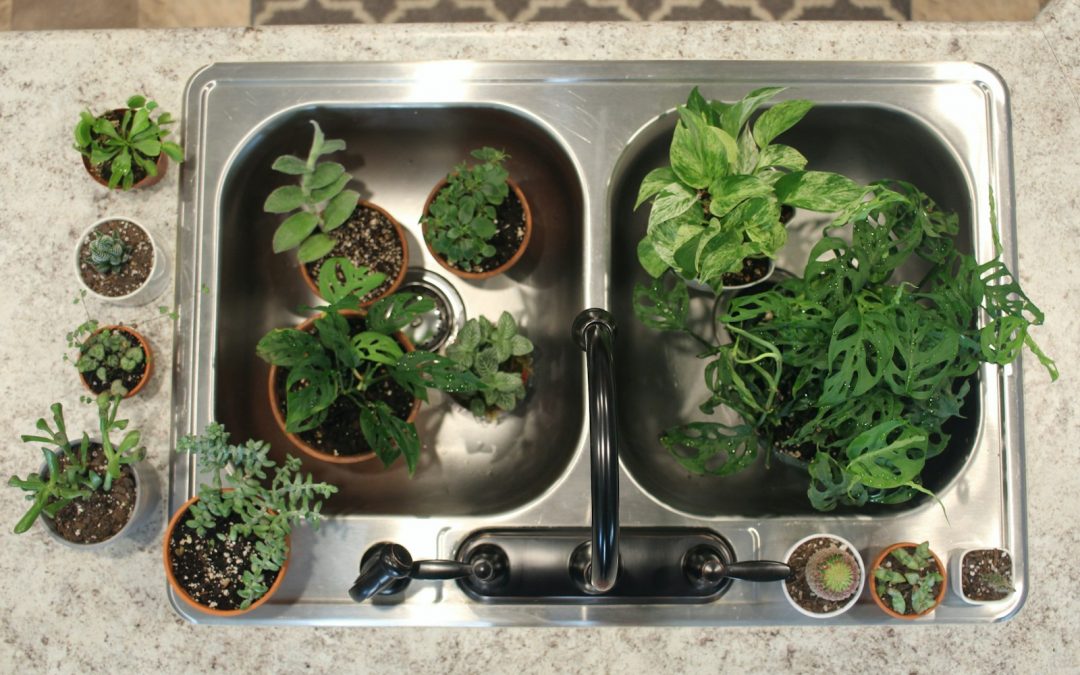Contents
- 1 How to Clean and Sanitize Indoor Plant Pots for Healthy Growth
How to Clean and Sanitize Indoor Plant Pots for Healthy Growth
Keeping your plant pots clean isn’t just about aesthetics—it’s essential for plant health. Dirty pots can harbor bacteria, fungi, and pests that may harm your plants. In this guide, we’ll walk through how to properly clean and sanitize indoor plant pots, whether you’re reusing old ones or preparing new containers.
Why Clean Plant Pots Matter
When soil or residue is left behind in old pots, it can encourage:
Mold and mildew growth
Pest infestations like fungus gnats
Root diseases like root rot
Nutrient imbalances
A simple cleaning routine between replanting helps prevent these problems and gives your plant a healthier start.
Regular cleaning is also important for indoor environments where airflow and light may be limited, and diseases can spread quickly from one pot to another. By disinfecting containers, you’re adding a strong layer of protection for your houseplants.
What You’ll Need
Dish soap or biodegradable detergent
White vinegar or hydrogen peroxide
Scrubbing brush or sponge
Gloves
Bucket or basin
Old toothbrush for tight spots
Paper towels or a clean cloth for drying
Step-by-Step Cleaning Instructions
1. Remove Soil Residue
Empty the pot completely and shake off any remaining soil. Use a stiff brush to scrub off caked soil and salts from the rim and interior. This helps expose any hidden bacteria or mold you need to wash away.
2. Wash with Soapy Water
Fill a bucket with warm water and mild dish soap. Submerge the pot (if it fits) or scrub thoroughly with a sponge or brush. Clean both inside and outside. This removes organic matter and some surface-level pathogens.
3. Rinse Thoroughly
Rinse the pot well with warm water to remove all soap residue. Any leftover detergent can damage sensitive roots or affect nutrient absorption.
4. Sanitize
Disinfect using one of the following:
Vinegar Solution: 1 part white vinegar to 1 part water
Hydrogen Peroxide (3%) – spray or soak
Let the pots sit for 10–15 minutes in the solution, then rinse and allow them to air dry. For heavy infections, let them soak for 30 minutes before scrubbing.
5. Dry Completely Before Reuse
Allow pots to dry naturally in a clean, well-ventilated area. Moisture left in a pot can encourage fungal growth, so don’t skip this step.
When Should You Clean Pots?
Before repotting a new plant
After removing a diseased plant
If you’re switching plant species
At the end of a growing season
Anytime white mineral crusts appear on pot edges
Best Tools to Help with Plant Pot Cleaning
🧼 Heavy-Duty Cleaning Brush
Helps scrub away stubborn soil, salt buildup, and residue from both plastic and terracotta pots.
👉 Heavy-Duty Plant Pot Cleaning Brush – Amazon
🧴 Hydrogen Peroxide Spray
Safe, effective disinfectant that breaks down into water and oxygen. Ideal for cleaning without leaving harsh chemicals.
👉 Hydrogen Peroxide for Garden Use – Amazon
Bonus Tip: Cleaning Terracotta Pots
Terracotta pots absorb moisture and fertilizer salts more than plastic or ceramic pots. Soak them in a vinegar solution for 30 minutes, scrub gently, and rinse well before use.
If reused without cleaning, terracotta can pass along diseases and nutrient imbalances that hinder plant growth. Frequent cleaning helps prolong the pot’s life while keeping plants happy.
Related Articles
Learn how to Start Composting in Your Kitchen
Check out our Indoor Plant Pest Identification and Treatment Guide
Read more about root rot prevention
Outbound Articles
For additional tips, check out this helpful guide on how to disinfect garden pots.
Final Thoughts on Cleaning Indoor Plant Pots
Taking the time to clean your indoor plant pots pays off in the long run. Not only does it reduce the chance of disease and pests, but it also improves the longevity of the pot itself. Whether you’re reusing a container or preparing it for seasonal planting, proper cleaning keeps your indoor garden healthy and thriving. Add it to your regular routine and your plants will thank you.
A quick monthly inspection of your pots—even if you don’t replant—can help you catch mold, pests, or calcium deposits early. The extra effort now can prevent bigger issues later, saving time and protecting your plants’ health.

